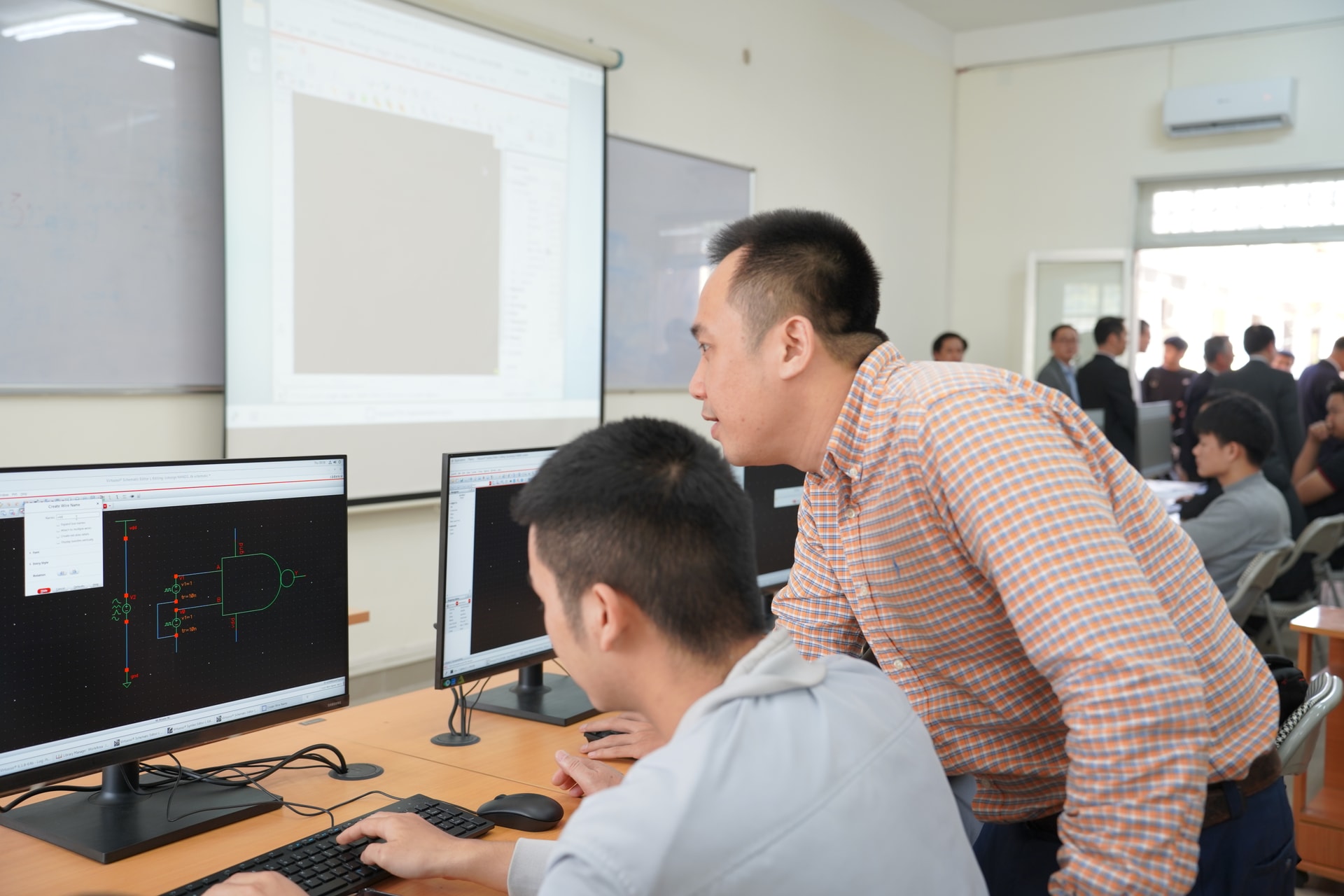
Need human resources for new industries
Currently, Da Nang city is implementing development policies such as Conclusion No. 79-KL/TW of the Politburo on continuing to implement Resolution No. 43-NQ/TW of the Politburo on building and developing Da Nang city to 2030, with a vision to 2045; Resolution No. 136/2024/QH15 on the organization of urban government and a number of specific mechanisms and policies for the development of Da Nang city.
By 2024, the digital economy will contribute 20.69% of the city's GRDP. The University of Economics (University of Danang) will keep up with the training needs to meet current and future business needs by pioneering training in related majors such as: E-commerce, Digital Marketing, Digital Business, Financial Technology.
The University of Technology (University of Danang) currently trains many majors related to semiconductors with a total of 1,500 - 1,600 students entering the school each year. However, the source of high-quality labor in the field of semiconductors is still at risk of shortage. Because in the past, students in this field were mainly trained through basic majors such as electronics and telecommunications engineering. Graduates can still work in the field of semiconductors, but not as specialized as current training programs.
Currently, the demand for human resources is increasing rapidly due to the shift in the global supply chain and the State's investment attraction policy, but the domestic training system has only caught up in recent years. The supply and demand of human resources are not balanced, the demand from businesses is increasing, but the number of engineers receiving specialized training has not been able to meet the demand. Also, the previous training program was still theoretical, not closely linked to the practical requirements of businesses. The lack of international standard laboratories and internship opportunities in industrial environments also limits the "real-life" ability of students after graduation...
According to Associate Professor, Dr. Nguyen Huu Hieu, Rector of the University of Technology, the school has been adjusting the training program towards increasing the proportion of practical and project courses, adding in-depth content on semiconductor microcircuits, building specialized laboratories using industry-standard software, as well as signing cooperation agreements with businesses to bring students into practice early. “Our goal is not only to train enough quantity, but also to ensure quality, so that students after graduation can immediately participate in the global semiconductor value chain,” Associate Professor, Dr. Hieu emphasized.
According to Associate Professor, Dr. Nguyen Gia Nhu, Rector of the University of Technology and Engineering (Duy Tan University), universities are facing a major challenge in the face of the development of AI. The market is demanding skills in AI, machine learning, big data and automation, leaving graduates often lacking the practical skills to work with the new technologies that businesses are adopting.
AI is automating traditional tasks such as data entry, basic data analysis, or even design and programming, leading to students not being equipped with new skills, making it difficult to compete with machines and more highly qualified colleagues. Therefore, schools are required to develop updated training programs; at the same time, integrate multidisciplinary skills such as combining technology with economics, medicine, and education so that students understand how to apply AI in practice. In addition, it is necessary to strengthen cooperation with businesses so that students can intern in real AI projects, organize seminars or guide final projects, helping students not only learn theory but also grasp practical needs, reducing the risk of unemployment.
Strategic direction
Da Nang is currently one of the leading centers of higher education in the Central and Central Highlands regions, including public and private schools. The schools all focus on improving the quality of training, updating the curriculum in a modern direction to meet the increasing needs of society and the labor market.
Associate Professor, Dr. Nguyen Huu Hieu said that in 2025, the University of Technology will open a new major in energy management and a major in railway and metro construction. In the period up to 2030, the school will focus on high-tech majors such as information technology and semiconductors with the goal of stably providing highly qualified human resources to serve the semiconductor industry according to the needs of businesses; creating a premise to attract many large businesses and companies operating in the field of semiconductors and chip design to invest and expand production in Da Nang.
The policy of merging Da Nang city and Quang Nam province is a historical milestone, opening the door to a new breakthrough development period with expanded resources and space, requiring the city to have many changes in leadership, direction, management and operation of the apparatus.
To realize the above goal, at the end of 2024, the City People's Council issued Resolution No. 57/2024/NQ-HDND stipulating policies for developing human resources in the field of semiconductor microchips and artificial intelligence in the city. Accordingly, to attract experts, scientists, and human resources in the field of semiconductor microchips, the City People's Committee has proposed many outstanding support policies with a total estimated budget of about 873 billion VND. Recently, the City People's Council issued Resolution No. 15/2025/NQ-HDND stipulating policies for developing high-quality human resources in the public sector.
All policies on human resource development in the public sector or private sector in a number of key industries and fields in the target by 2030, with a vision to 2045, stem from the expectation of developing human resources with digital knowledge and skills to promote the productive forces. Strive for an average digital economic/digital transformation growth rate of 10%/year, as the target set at the 23rd Congress of the City Party Committee.
Source: https://baodanang.vn/dau-tu-nguon-nhan-luc-mui-nhon-3301229.html








![[Photo] Amazing total lunar eclipse in many places around the world](https://vphoto.vietnam.vn/thumb/1200x675/vietnam/resource/IMAGE/2025/9/8/7f695f794f1849639ff82b64909a6e3d)


























































































Comment (0)